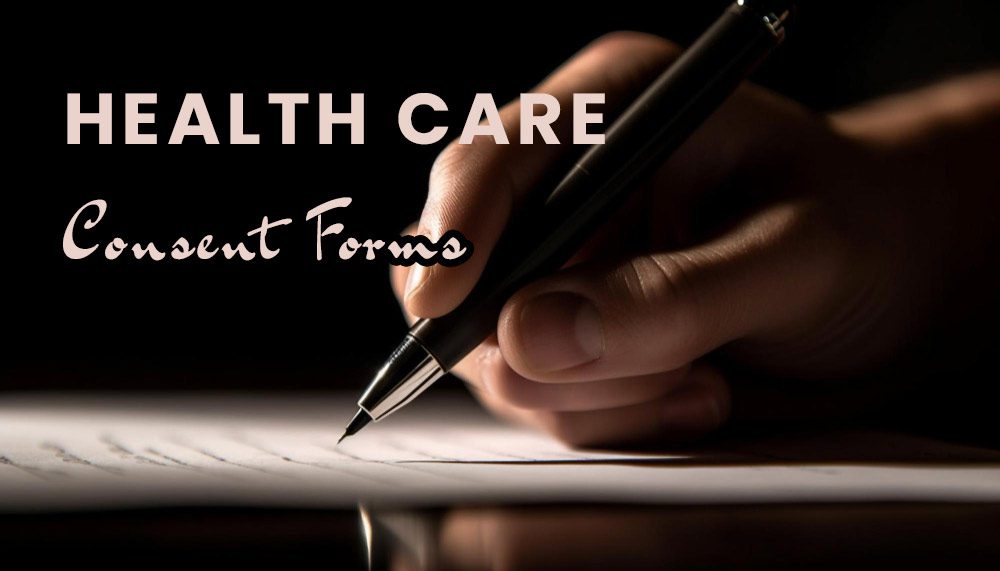As digital signature is widely accepted in retail and real estate, the place where it is mostly still on paper is the healthcare sector. Since it is widely not accepted as a foolproof acknowledgement. We had the privilege of working on consent forms in one of our healthcare applications which will not only capture their digital signature it will also capture their selfie for confirmation, we will list down the factors we came up in our study.
- Patient Information:
- Include the patient’s full name, date of birth, address, and contact details.
- Description of Treatment/Procedure:
- Clearly explain the proposed treatment, associated risks, benefits, and potential alternatives.
- Purpose of the Treatment:
- Provide a rationale for the recommended treatment, along with expected outcomes.
- Disclosure of Risks:
- Detail potential risks, complications, and side effects associated with the treatment.
- Alternatives:
- Present information about alternative treatments, including their risks and benefits.
- Voluntariness:
- Emphasize that the patient is consenting voluntarily without coercion.
- Duration of Consent:
- Specify the timeframe for which the consent is valid, especially for ongoing treatments.
- Confidentiality:
- Assure the confidentiality of the patient’s medical information.
- Provider Information:
- Include the name, credentials, and contact information of the healthcare provider.
- Interpreter/Translation Services:
- Address language barriers by offering interpreter services or translated materials.
- Witnesses:
- Provide space for patient and provider signatures, with the option for a witness in certain situations.
- Date and Time:
- Include spaces for the date and time of both the patient’s and provider’s signatures.
- Emergency Situations:
- Account for emergency scenarios where immediate treatment is necessary, and written consent may not be possible.
- Parental or Guardian Consent:
- If the patient is a minor, ensure there is space for a parent or legal guardian’s signature.
- Legal Considerations:
- Adhere to local, state, and national laws governing healthcare consent.
- Review and Questions:
- Confirm that the patient has had an opportunity to ask questions and received satisfactory answers.
We also took into the factors what should not be a consent form, if you are developing a consent form make sure that your consent form doesn’t has the below mentioned points.
- Ambiguity:
- The consent form should be clear and specific. Avoid using vague language or terms that could be misunderstood by the patient.
- Legalese:
- Use plain language that is easily understandable by the average person. Avoid excessive legal jargon that may confuse the patient.
- Omission of Risks:
- Do not omit or downplay potential risks associated with the treatment or procedure. Provide a thorough and honest assessment of the risks involved.
- Coercive Language:
- Avoid any language that may be interpreted as coercive or pressuring the patient into consenting. The decision to provide consent should be voluntary and without undue influence.
- False Guarantees:
- Do not make promises or guarantees of specific outcomes that cannot be assured. Ensure that the patient understands the uncertainties and variability in medical treatments.
- Excessive Detail:
- While it’s important to provide comprehensive information, avoid overwhelming the patient with unnecessary details that may distract from the core information.
- Blank Spaces or Missing Information:
- Ensure that the consent form is complete and does not have blank spaces. All relevant information, including the description of the procedure, risks, and alternatives, should be filled in.
- Assumption of Consent:
- Do not assume consent based on silence or lack of objection. Clearly state that the patient has the right to ask questions, seek clarification, and withhold consent.
- Outdated Information:
- Regularly review and update consent forms to reflect current medical practices, legal requirements, and technological advancements.
- Lack of Confidentiality Assurance:
- Make sure to include a statement assuring the confidentiality of the patient’s medical information. Avoid any language that may undermine patient privacy.
- Inadequate Language Accessibility:
- If the patient requires translation services, ensure that the consent form is available in the appropriate language. Avoid relying solely on machine translations for accuracy.
- Ignorance of Cultural Sensitivities:
- Be aware of and respect cultural differences. Avoid language or content that may be insensitive or offensive to particular cultural or religious beliefs.
- Inadequate Provision for Emergency Situations:
- If the consent form does not address emergency situations where immediate treatment is necessary, it may not adequately cover all scenarios.
We hope that this will be helpful for your practice in developing your own consent form. If you want to know our work in healthcare in our site.





